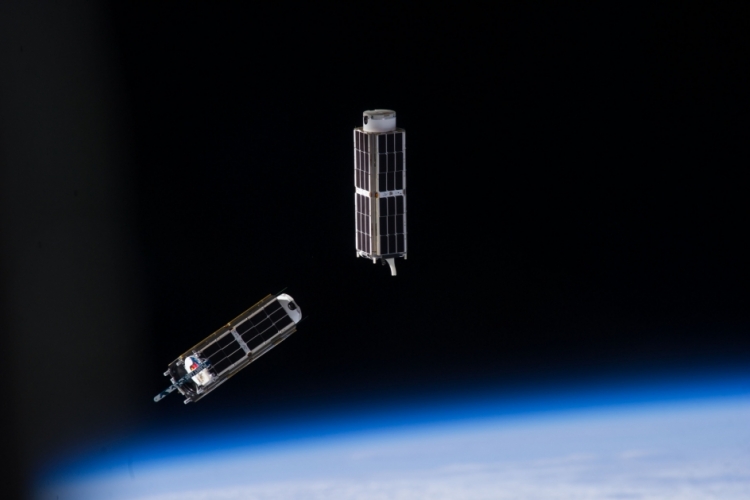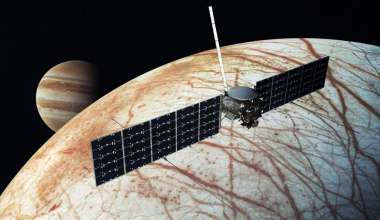How do you teach a satellite to park? As spacecraft transition from standalone vehicles to swarms of “self-driving" robots that interact and dock on their own in space, engineers need a way to test those maneuvers here on Earth. An Aerospace team found a possible solution on Sunday Night Football ™.
For this team, the action was not on the field, but in the sky, where a camera sailed through the air on a system of cables and pulleys, capturing the game from above. Such cable systems allow cameras to move between any two locations in a three-dimensional space – exactly the kind of maneuvers needed to test and train the next generation of satellites.
An Aerospace version of this concept, dubbed Zipline, utilizes a similar cable system to test the movements and interactions of self-driving, or autonomous, satellites.
Project lead Ben Bycroft believes that the coming “sea change” in space technology will require equally bold advances in testing methods.
“We’re trying to build Zipline as a test bed to prove that we can have space vehicles approach each other without crashing or missing,” said Bycroft, manager of Aerospace’s controls analysis department. “We want to be able to test both the hardware and the algorithms – all the processes you might need to make a bunch of autonomous robots work independently in space.”
Ongoing testing for autonomous spacecraft largely relies on robotic arms that simulate simple flight maneuvers but are severely limited in scale and range of motion.
“The next wave of satellites will need a new sense of sight and spatial thinking,” Bycroft said. “Right now, we have no way of testing those senses in realistic scenarios with full range of motion. Zipline will take us much closer to the real deal.”
In essence, the system functions as “a tug of war,” Bycroft said. Cables attached to each corner of the satellite can be reeled in or out to increase or decrease tension, pulling the craft to any location within a desired space.
This way, the system will only be limited by the length of the cables and the size of the testing environment. As an example, Bycroft referenced the challenge of testing a satellite’s camera sensor, which must be able to detect an incoming craft from afar.
“Think of your phone camera. When you’re up close, it’s easier to see something and the same holds true for cameras on spacecraft,” he said. “But from 30 meters away on orbit, an approaching satellite might be four very dim pixels in the dark of space. We have to train the camera algorithms to detect that tiny dot from greater distances and adjust as the satellites come closer together.”
To build the system itself, Bycroft and his team acquired an off-the-shelf "flying” camera trolley and will create custom motor controls and algorithms to simulate zero-gravity maneuvers.
Once fully developed, Zipline will help enable new technologies that could increase resiliency across satellite constellations. “Gas stations” in space and CubeSats that assemble like Legos on orbit could become realities with Zipline’s proving ground.
“It’s been a challenge for a while to come up with test beds for these emerging concepts,” Bycroft said. “We were brainstorming this idea of the flying stadium camera approach thinking, ‘Does this actually work for what we’re trying to do?’ It turns out it does.”





